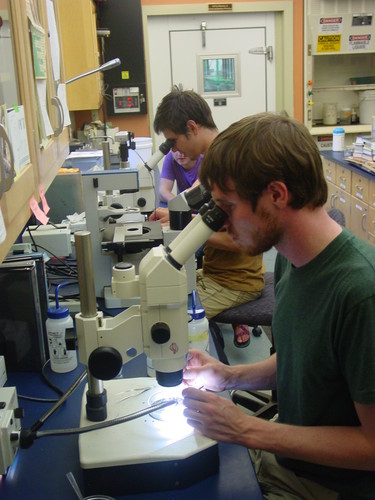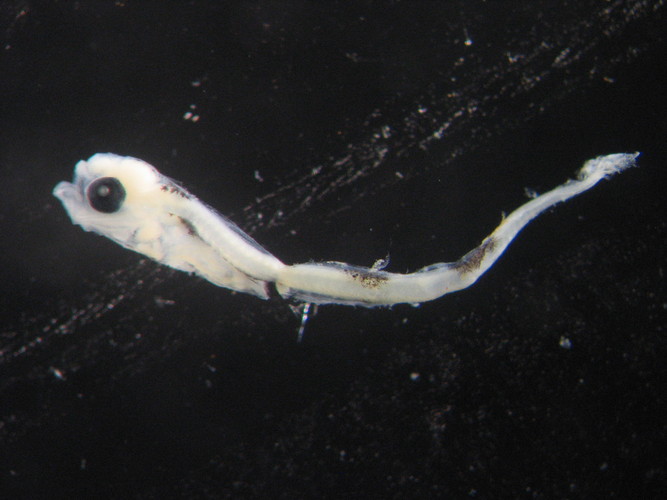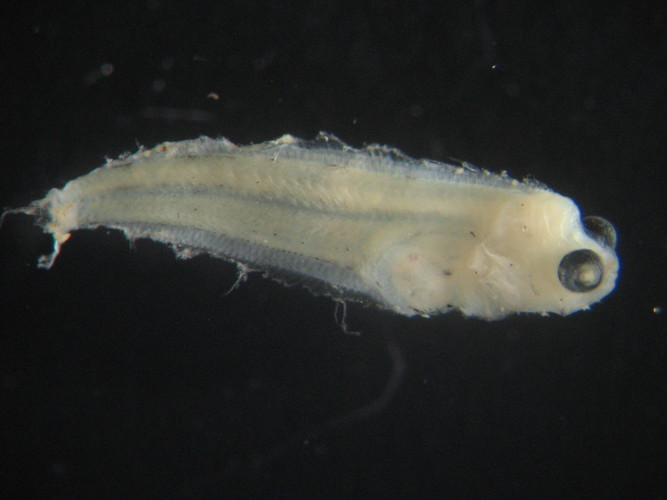The Wrack
The Wrack is the Wells Reserve blog, our collective logbook on the web.
The Wrack is the Wells Reserve blog, our collective logbook on the web.
Fellow Research Intern Tim Dubay and I have been working with Jeremy Miller this summer to expand the Wells Reserve’s ongoing larval fish (ichthyoplankton) project in the Webhannet estuary. The Wells Reserve has been monitoring larval fish since 2008 (see Fish larvae under the microscope) and I am excited to be a member of Team Larval Fish!

Every week we have been fishing the incoming tide from the Wells Harbor dock, sampling the flow of the current for roughly an hour. We use a mesh plankton net with a plastic ‘cod end’, which captures larval fish, invertebrates, and all sorts of aquatic debris. Under the microscope, we ‘pick’ the samples by hand, searching for fish larvae often only a few millimeters long. We then measure each individual fish larva and identify them to species.
Marine fish can have surprisingly complex life cycles and utilize the Wells Reserve estuaries at several developmental stages. After hatching offshore, larvae become part of the floating plankton and some are transported into the estuary by the currents and tides. Many of these larvae remain in the estuary to transform into free-swimming juveniles. The estuary acts as a ‘nursery habitat’, where young fish receive protection from predators and opportunities for growth. We are interested in tracking what enters the Webhannet River estuary, monitoring the abundance and diversity of fish larvae, as well as investigating the seasonal and spatial patterns of larval fish assemblages.
Since the project began four years ago, we have recorded 17 different species of larval fish at our Wells Harbor site alone! These include common estuarine fish such as Winter Flounder (Pseudopleuronectes americanus), Sand Lance (Sand Eels) (Ammodytes americanus) and Sculpins (Myoxocephalus sp.), as well as commercial offshore species like Atlantic Herring (Clupea harengus), Atlantic Cod (Gadus morhua) and Pollock (Pollachius virens). The broad variety of species that use the Webhannet estuary during their early life histories speaks to the importance of protecting and maintaining this crucial habitat.


Pollock larva (above), Winter Flounder larva (below)
This summer we are expanding sampling into the Little River estuary and possibly other nearby areas if time and resources allow. We hope this research will help inform environmental management in the estuary and give us a greater understanding of local fish ecology.